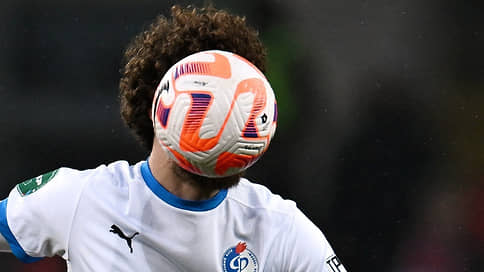The main case – Newspaper Kommersant No. 46 (7491) of 03/18/2023
[ad_1]

Professional football players are subject to an increased, immediately by 50%, risk of dementia. This conclusion was reached by specialists from the Swedish Karolinska Institute. The results of their work are published in the latest issue of the Lancet Public Health.
On Friday, the Lancet Public Health published the results of a study conducted by specialists from the Karolinska Institute (the largest Swedish and one of the largest medical universities in Europe). It is based on a study of the medical histories of six thousand Swedish football players over a nearly century-long period from 1924 to 2019. These data were compared with the medical records for the same period of 56,000 non-footballers. It turned out that among football players, 9% of the studied were diagnosed with dementia, including Alzheimer’s disease. In the control groups, this figure did not exceed 6%. That is, in people who are professionally involved in football, the risk of facing neurodegenerative diseases with age (not all, for example, former players diagnosed with Parkinson’s disease turned out to be even slightly less than in control groups) is one and a half times higher than the average for the population. The study notes that the findings are strong evidence of a direct link between the fact that football players often head the ball and the development of signs of dementia in some of them. The key argument for this conclusion was the data regarding goalkeepers. They play with their heads extremely rarely, one might say, in exceptional cases, and as a result, the statistics of the incidence of dementia among them is no different from that in the control groups. “This provides strong evidence to suggest that heading a ball is directly related to the development of dementia,” said study lead author Peter Ueda.
This is not the first study to uncover a link between heading a ball and neurodegenerative diseases. In 2019, specialists from the University of Glasgow published a similar work, and in 2022, scientists from the University of East Anglia. But the work of Swedish specialists is the most ambitious. Plus her publication in the Lancet Public Health gives her extra weight. Sufficient to give former players who actually experienced cognitive impairments a reason to demand compensation. There are such examples. For example, in rugby and American football, where the impact on the heads of the players is not limited to hitting the ball. Everything is much tougher there. So, back in 2016, more than 5,000 former players of the National Football League (NFL, American football) got the NFL to pay huge compensation for harm caused to health. The agreement between the parties, reached after a class-action lawsuit was filed in court, provides that the NFL will pay ex-players a total of $ 1 billion (the funds were reserved so that there would be enough for about 20 thousand former players, taking into account those who was just going to sue). In the UK, a multi-million dollar lawsuit filed by 185 former players at once against several governing structures, including the English Rugby Union (RFU) and the International Rugby Federation (World Rugby), is under consideration.
Note that the really effective way to ensure that the heads of football players do not suffer is one – to ban heading. But such a move would have drastically affected the game. So for now, it’s just about trying to protect children from playing with their heads. At the moment, the Football Association of England (FA) is conducting an experiment (it is limited to certain tournaments) among players under 12 years old. Its results will be submitted to the International Football Association Board (IFAB), the structure that is responsible for regulating the rules of football.
[ad_2]
Source link









